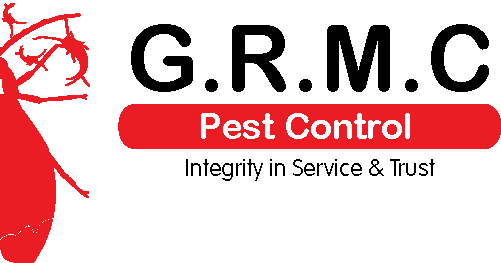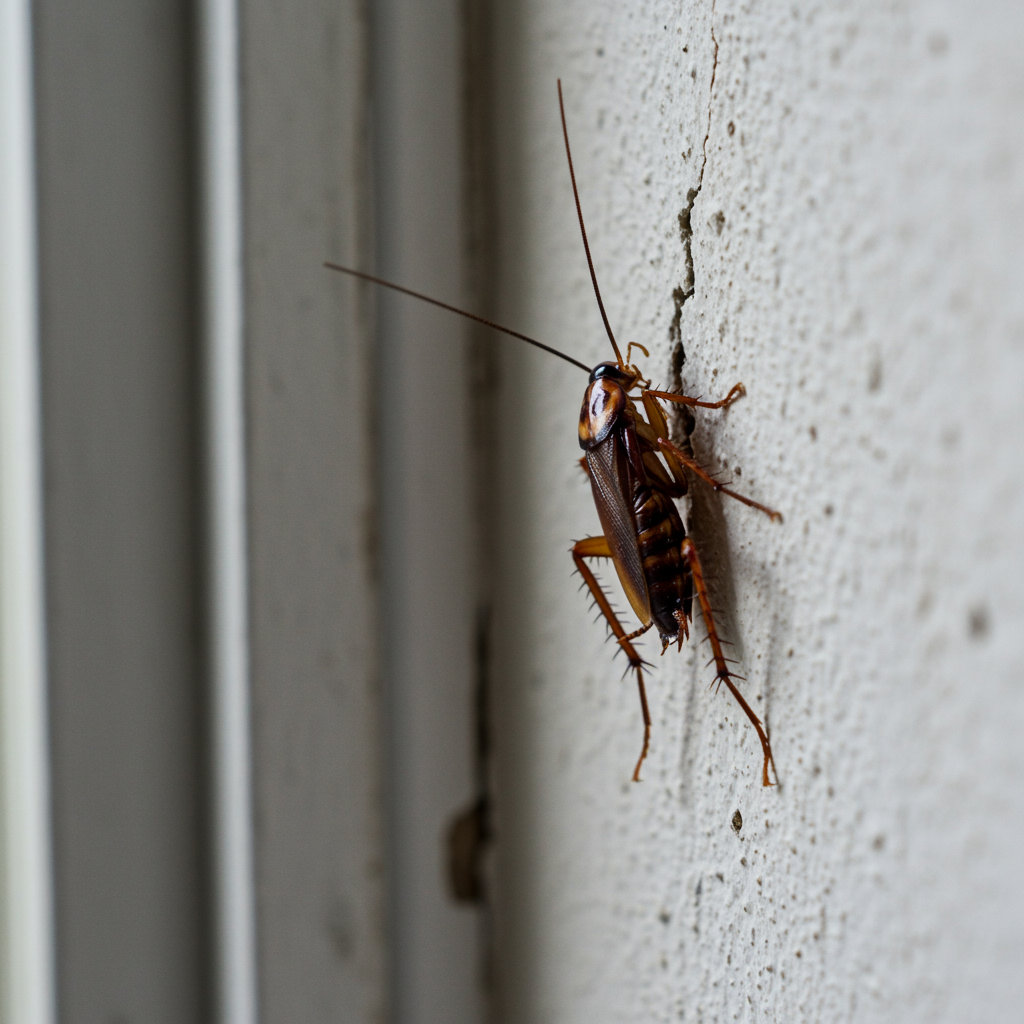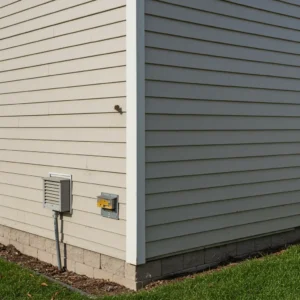Table of Contents
Home pest prevention is the proactive work of reducing pest attractants, sealing entry routes, and using monitoring to stop infestations before they start.
Effective prevention protects health, reduces repair costs, and preserves comfort by addressing the underlying causes that draw ants, rodents, cockroaches, mosquitoes, termites, bed bugs, spiders, and wasps into homes. This guide teaches homeowners practical, room-by-room techniques, exterior exclusion steps, eco-friendly Integrated Pest Management (IPM) options, seasonal schedules, and indicators for when to hire professional help.
You’ll find step-by-step sealing instructions, quick diagnostic checklists, comparison tables of non-toxic methods and smart monitoring tools, and region-specific guidance for Abu Dhabi and the UAE. Toward the end, we explain when certified, customized services complement DIY work and reference GRMC Pest Control’s organic and smart-IPM programs as professional options to consider and to book via their contact page.
What Are the Most Common Household Pests and What Attracts Them?
Pests commonly found in homes seek food, moisture, and shelter. They exploit structural gaps, clutter, and standing water to survive and reproduce. Understanding which pests are likely in your region and what draws them helps prioritize prevention steps.
Which Pests Commonly Infest Homes in Abu Dhabi and the UAE?
In Abu Dhabi and the UAE, hot climates and urban landscaping create favorable conditions for pests like ants, cockroaches, rodents, mosquitoes, and termites. These pests exploit irrigation, standing water in containers, air-conditioning condensate points, and imported mulch or firewood to find food and nesting sites.
- Target irrigation runoff and improve drainage.
- Ventilate subfloor areas to reduce termite risk.
- Check new landscaping materials before installation.
Main Attractants for Household Pests
Food debris, moisture, and shelter opportunities are the three primary attractants that draw pests into homes. Controlling each reduces infestation risk substantially.
- Food: Crumbs, uncovered pet food, improperly stored pantry items.
- Moisture: Leaking pipes, condensation, clogged drains.
- Shelter: Clutter, piles of cardboard, wall and roof gaps.
Quick Diagnostic Checklist
- Inspect and clean food areas daily.
- Check plumbing and appliances monthly for drips.
- Declutter storage areas and keep items off the floor.
How Do Pests Enter Your Home?
Pests enter through cracks, vents, utility lines, gaps around doors and windows, and poorly sealed roofing. The first line of defense is sealing these entry points.
| Pest | Primary Attractant / Habitat | Top Prevention Measure |
|---|---|---|
| Ants | Food residues, moist mulch | Clean food areas, trim vegetation |
| Cockroaches | Warm, damp kitchens | Fix leaks, seal gaps, use tight containers |
| Rodents | Shelter and food, foundation gaps | Seal openings >6mm, secure waste |
| Mosquitoes | Standing water | Eliminate water, improve drainage |
| Termites | Moist wood, soil contact | Fix leaks, inspect wooden structures |
How to Pest-Proof Your Home’s Exterior
Best Methods to Seal Entry Points
- Seal gaps around utility pipes and penetrations.
- Install door sweeps and weather-stripping.
- Mesh vents and cover weep holes while allowing airflow.
Yard & Landscaping Maintenance
- Do: Keep vegetation trimmed away from walls and remove debris promptly.
- Don’t: Pile mulch or firewood against foundations.
- Do: Direct irrigation away from foundations.
Foundation & Perimeter Inspection
Inspect foundations monthly for cracks, damp soil, and signs of gnawing or mud tubes.
| Exterior Area | Common Issue / Entry Point | Recommended Fix / Frequency |
|---|---|---|
| Foundation | Cracks, soil buildup | Seal cracks, regrade soil annually |
| Vents & Weep Holes | Damaged screens | Install mesh; inspect quarterly |
| Doors & Thresholds | Worn weather stripping | Replace sweeps seasonally |
Room-by-Room Indoor Prevention
Kitchen & Pantry
- Use airtight containers and clean spills immediately.
- Inspect pantry items monthly and discard expired goods.
- Seal gaps around appliances and plumbing.
Bathrooms & Basements
- Repair leaking fixtures and check condensate lines monthly.
- Use ventilation fans or dehumidifiers.
- Improve grading and drainage to keep wood dry.
Attics & Storage Areas
- Store items in sealed plastic bins, elevated off the floor.
- Seal roofline gaps and screen vents.
- Inspect for nests or droppings twice a year.
Eco-Friendly & Non-Toxic Pest Prevention
Integrated Pest Management (IPM)
- Use sticky traps and monitors to document pest trends.
- Prioritize exclusion and sanitation before chemicals.
- Reassess results before escalating to treatments.
Non-Toxic & Organic Options
| Method | Toxicity / Suitable For | Effectiveness / Notes |
|---|---|---|
| Diatomaceous Earth | Low toxicity; crawling insects | Effective when dry; apply carefully |
| Boric Acid Bait | Low–moderate; cockroaches | Effective in stations; avoid pets |
| Botanical Repellents | Very low; mosquitoes, flies | Short-term deterrent |
| Physical Traps | Non-toxic; rodents | Immediate capture; check regularly |
Smart Monitoring Technology
- Early detection via sensors and camera traps.
- Data-driven decisions reduce pesticide use.
- Remote alerts help time professional inspections.
When to Call Professional Pest Control
- Persistent sightings after two DIY attempts.
- Visible damage (termite tubes, gnaw marks).
- Bed bugs, termites, or large rodent activity.
Benefits of GRMC Pest Control’s Certified Services
- Customized, low-toxicity treatment plans.
- Certified organic and smart-IPM programs.
- Long-term prevention with data-driven strategies.
Why Schedule a Professional Inspection?
- Detects hidden vulnerabilities before damage escalates.
- Reduces future treatment costs.
- Recommended annually, or semi-annually for high-risk homes.
Seasonal Pest Prevention Strategy
Seasonal Pest Activity in Abu Dhabi
- Warm months: Mosquitoes and ants increase.
- Humid periods: Termite and cockroach risk rises.
- Construction seasons: Rodent displacement spikes.
Top 10 Seasonal Tasks
- Inspect and repair window and door screens.
- Clean gutters and remove debris.
- Seal foundation and roofline gaps quarterly.
- Trim vegetation each season.
- Store firewood away from structures.
- Service air-conditioning and drainage.
- Eliminate standing water weekly in warm months.
- Rotate stored items in attics and garages.
- Monitor traps monthly.
- Schedule professional inspection yearly.
Seasonal Adjustment Tips
- Increase water management in hot months.
- Focus on sealing before cooler or wet seasons.
- Use inspection data to refine prevention timing.
Maintaining a Long-Term Pest-Free Home
Daily Habits
- Clean spills and store leftovers immediately.
- Empty trash and rinse recyclables.
- Inspect under sinks and behind appliances weekly.
Inspection Schedule
- Monthly: Quick visual checks of plumbing and food areas.
- Quarterly: Perimeter and landscape inspection.
- Annually: Full professional inspection.
Recommended Tools & Resources
| Tool / Resource | Function | Application |
|---|---|---|
| Airtight Containers | Sanitation & Storage | Preserve food, deny access |
| Caulk & Weather-Stripping | Exclusion | Seal small gaps & thresholds |
| Sticky Traps & Smart Sensors | Monitoring | Detect early activity |
Conclusion
Applying the room-by-room actions, exterior sealing, eco-friendly methods, and inspection cadences described here will help homeowners maintain a long-term, pest-free environment while minimizing chemical use and protecting property value.
For certified professional support, consider GRMC Pest Control’s Organic Pest Control and Smart IPM Solutions accredited, customized programs available across the UAE. Schedule an inspection today to evaluate your property’s specific needs.









